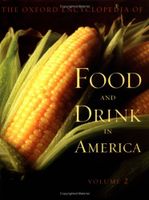Advertisement
Rice: Wild Rice
Published 2004
There have been over sixty common names for “wild rice,” based on both aboriginal and European languages: these include mano’ mĭn (Ojibwa, good berry), folle avoine (French, crazy oat), and the English “wild rice.” Though at least four different plants go by the name “wild rice,” in the United States and Canada this term most commonly refers to two related species, Zizania aquatica and Zizania palustris. Recent plant classifiers have put Zizania in the same botanical tribe, Oryza, to which rice (Oryza sativa) belongs, indicating some relationship. Z. aquatic grows in limited areas along the Saint Lawrence River and on the Eastern U.S. coastline; because of its long, thin seeds that shatter easily, it is not harvested for grain. Z. palustris (also called “Northern wild rice” and consisting of two varieties, palustris and interior) has large, plump seeds, is from four to six feet tall, and is the species whose seed is harvested as a food source for humans. This species is the subject of this entry.


